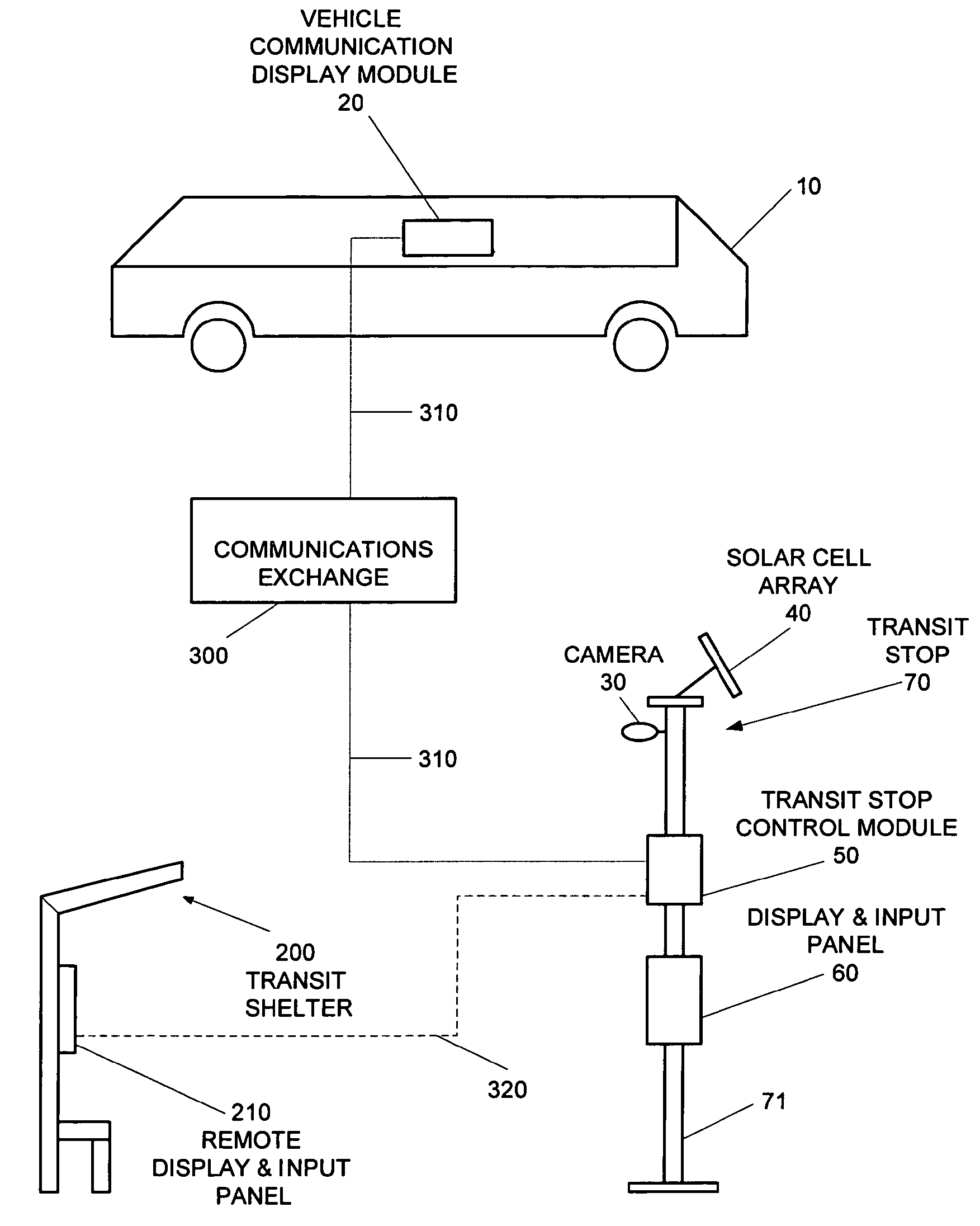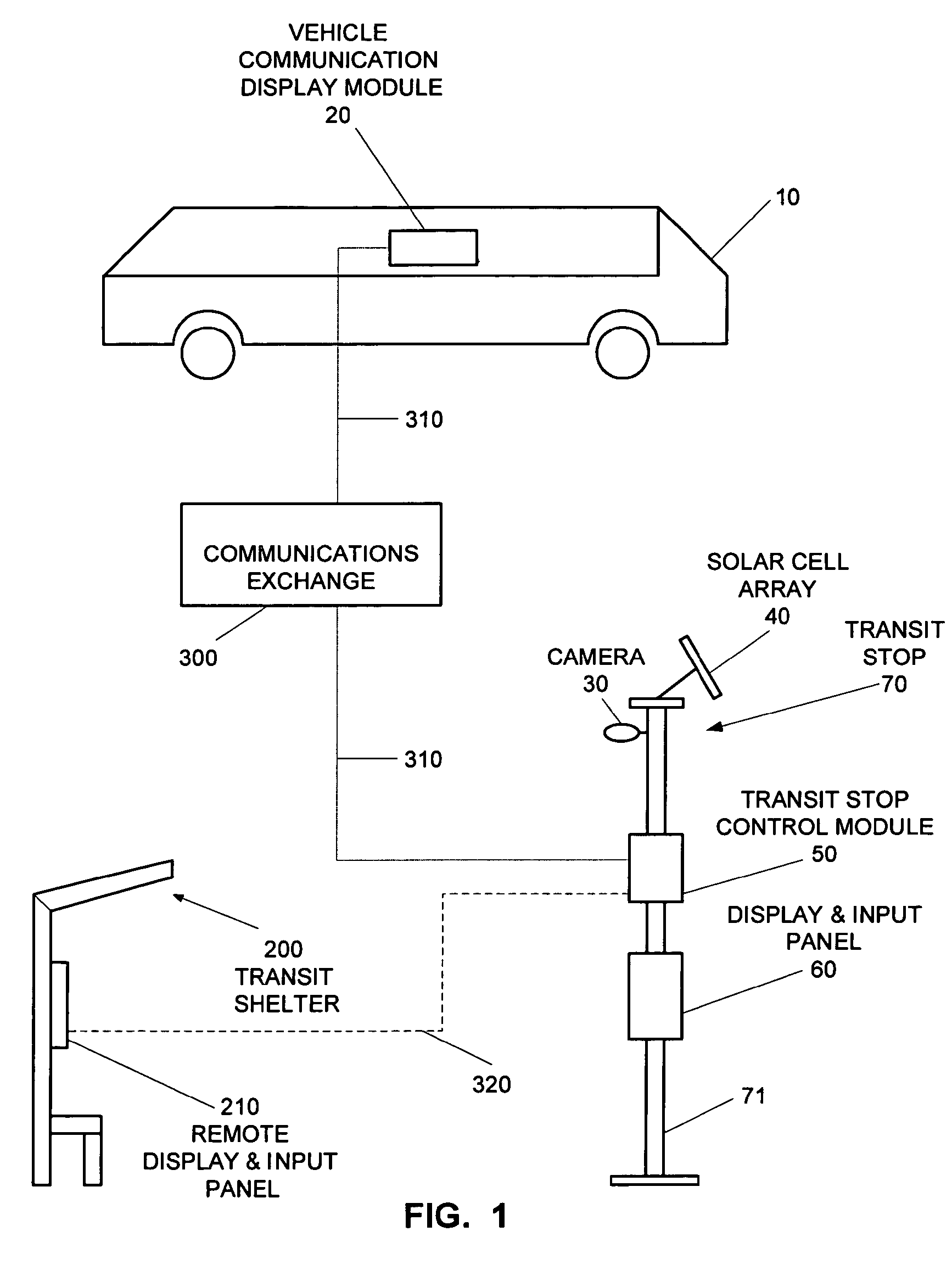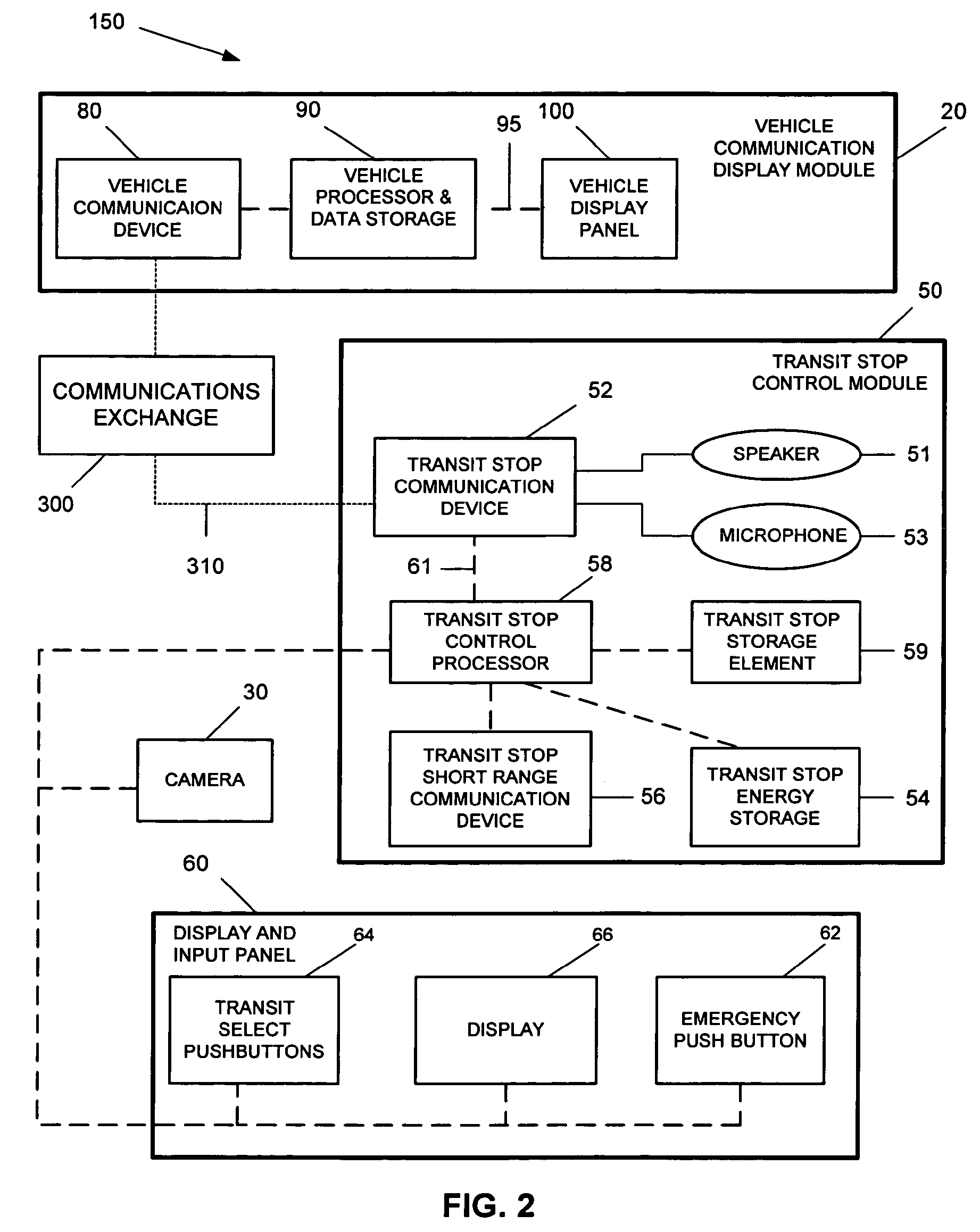Transportation notification, emergency response, and surveillance system
- Summary
- Abstract
- Description
- Claims
- Application Information
AI Technical Summary
Benefits of technology
Problems solved by technology
Method used
Image
Examples
Embodiment Construction
[0029]FIG. 1 depicts a preferred embodiment of the public transportation information system, which comprises a transit stop 70 communicatively coupled to a communications exchange 300 communicatively coupled to a mass transit vehicle 10. Transit stop 70 comprises a transit stop control module 50 powered by a solar cell array 40 and communicatively coupled to a user interface 60 and camera 30. The transit stop control module 50, camera 30, solar cell array 40, and user interface display and input panel 60 are supported by a support platform 71. The transit stop could also be supported by the support member of a display information apparatus incorporated herein by reference “Application No. 60 / 388 / 532, filing date Jun. 13, 2002. The transit stop control module 50 is optionally communicatively coupled via shelter communication link 320 to a remote display and input panel 210 mounted in a nearby transit shelter 200. Shelter communication link 320 preferably comprises low power wireless ...
PUM
 Login to View More
Login to View More Abstract
Description
Claims
Application Information
 Login to View More
Login to View More - R&D
- Intellectual Property
- Life Sciences
- Materials
- Tech Scout
- Unparalleled Data Quality
- Higher Quality Content
- 60% Fewer Hallucinations
Browse by: Latest US Patents, China's latest patents, Technical Efficacy Thesaurus, Application Domain, Technology Topic, Popular Technical Reports.
© 2025 PatSnap. All rights reserved.Legal|Privacy policy|Modern Slavery Act Transparency Statement|Sitemap|About US| Contact US: help@patsnap.com



